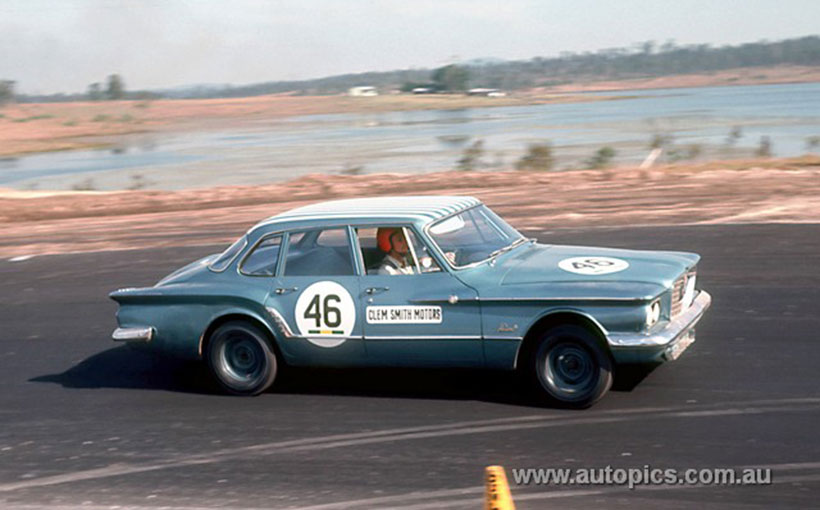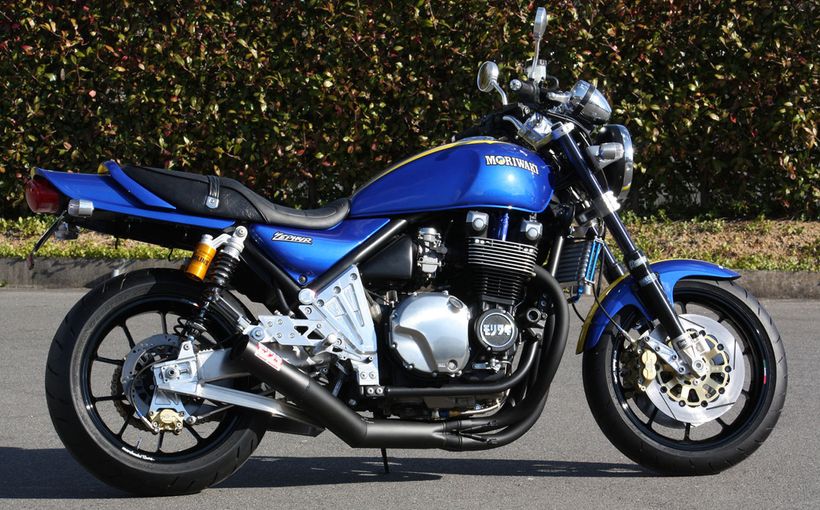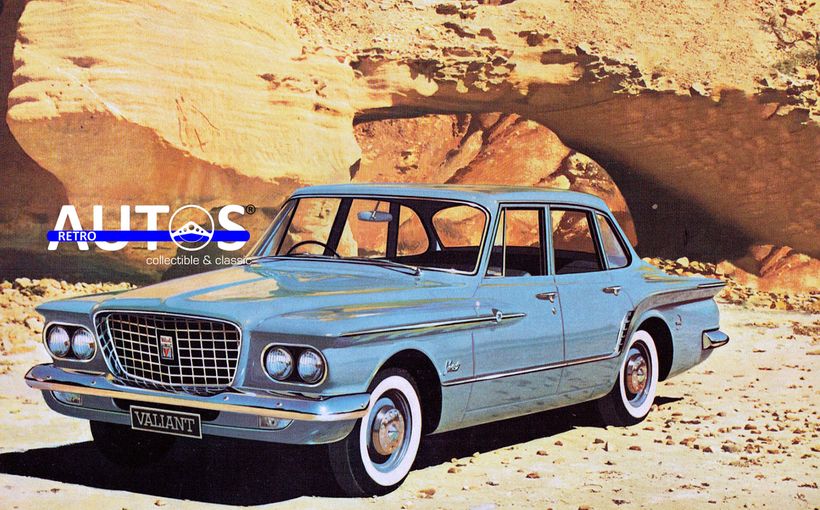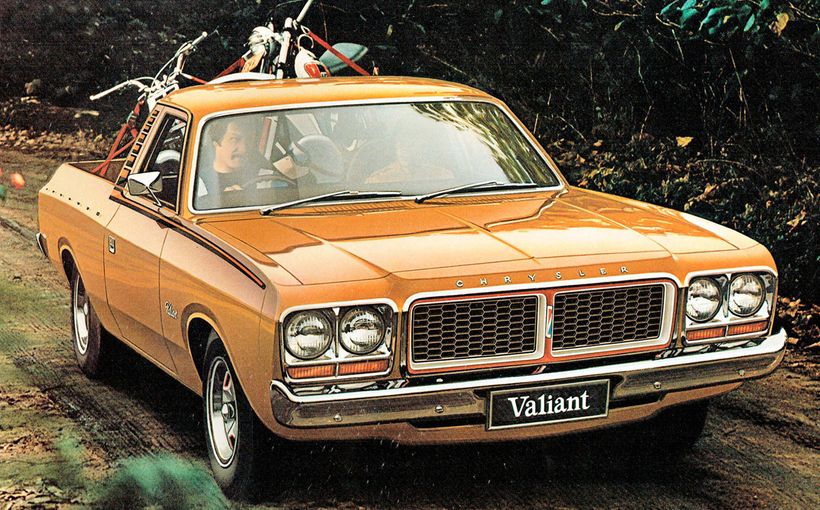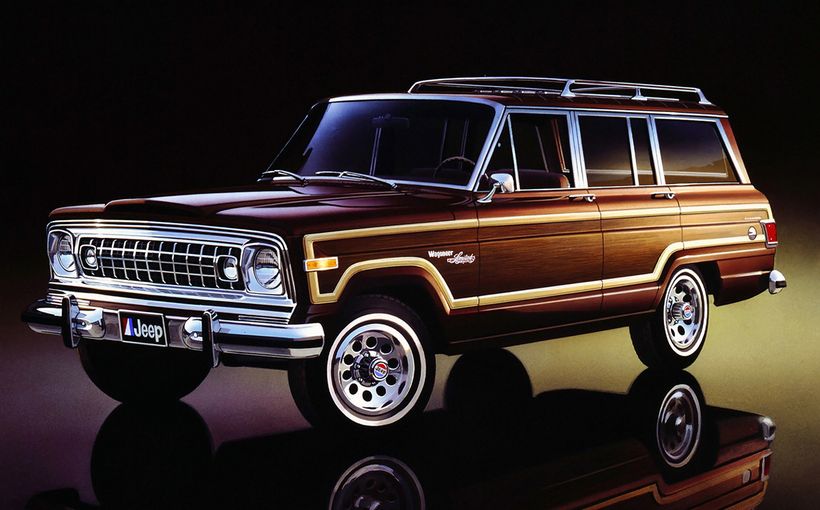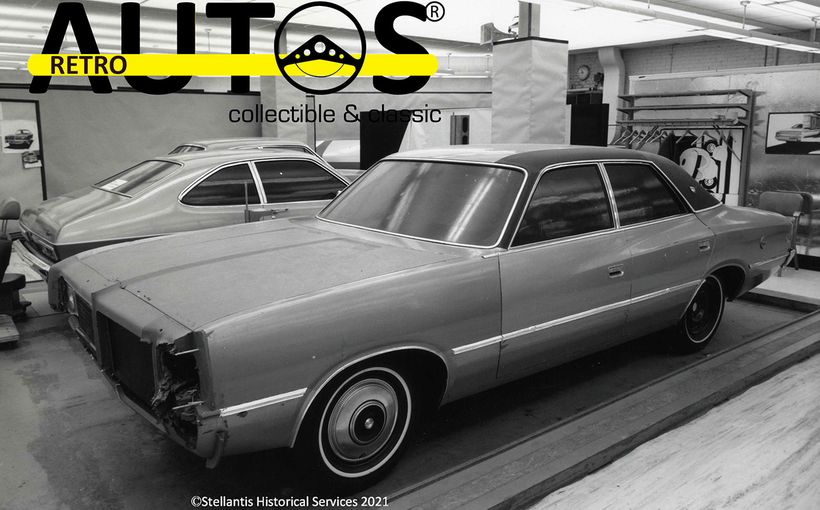Valiant R & S Series: Potent ’60s Pentastars!

Chrysler’s Valiant Hemi Pacers and R/T Chargers are today revered as the finest high performance road and track cars to wear the famous pentastar badge in Australia, but the most successful Valiant to compete in the Australian Touring Car Championship was in fact the first one – the R series.
That historic achievement occurred at South Australia’s Mallala Raceway on April 15, 1963 when Australia’s premier tin-top title was still being decided by a single race each year.
On this occasion, humble Melbourne car dealer Ern Abbott in his R series Valiant had the audacity to come within one tenth of a second of stealing pole position from Bob Jane’s all-conquering 4.1 litre Jaguar Mk II – the reigning ATCC title holder and at the time the fastest touring car in Australia.
And keeping Abbott company on the three-car front row was another R series driven by Adelaide Chrysler dealer Clem Smith. The sight of these two drum-braked, slant six, three-speed Valiants sharing the front row with a disc-braked, DOHC, four-speed Jaguar was truly a sight to behold.

Jane sprinted away into the lead of the 25-lap/50 km race. With Norm Beechey’s 409 Chevy Impala sidelined before the meeting, Jane’s only possible challenger was Abbott. The leading Jaguar and Valiant powered away from the rest of the pack at such a rate that they held a 10-second lead over third-placed Smith by the half-way point.
Unfortunately, the four wheel drums on Abbott’s R series could not sustain their bite under such extreme use on a track notoriously hard on brakes. The Valiant challenge literally began to fade in the closing laps, allowing Jane to open up a seven-second margin by the time he took the chequered flag.
With his brakes suffering heat stroke, Abbott risked falling back to within striking distance of Smith’s Valiant, but the Victorian was able to hang on to his runner-up spot to record a historic 2-3 ATCC result for the local Chrysler marque – the best overall result for a Valiant in ATCC history.
The startling speed shown by the hot six Valiants that day was not the historic anomaly the ATCC ledger on its own might suggest.

The introduction of Australia’s first set of national touring car rules (Appendix J) in 1960 brought structure and discipline to what had become an outlaw class, yet still left ample room for race teams to fiddle. By 1963, though, the hot-rodding skills being applied to these stock standard road cars were starting to seriously stretch the performance envelope again.
Jane’s 4.1 litre lightweight Jaguar Mk II was a prime example of the combined skills of Jane, mechanic John Sawyer and renowned race tuner Harry Firth.
Rivals tried hard to jam a stick in the spokes of Jane’s Jaguar juggernaut during this period, the most notable being arch rival Norm Beechey with his efforts in a super modified 48-215 Holden and the ferociously fast but fragile big block V8 Impala.
However, motor sport history has generally overlooked the presence of some well prepared and extremely quick R series Valiants during this golden era, which were often nipping at the heels of Jane and Beechey and really shone on that amazing weekend at Mallala in 1963. The Valiant was a performance stand-out from the start.

New Valiants reign supreme at Daytona!
Chrysler, Ford and General Motors all launched their new six cylinder ‘compact’ models in the US for the 1960 model year, which were designed to offer home-grown alternatives to imported cars that were gaining popularity with their smaller size and better fuel economy.
Ford unveiled its new 144 cid inline six Falcon, General Motors parted the curtains on its radical rear-engined, air-cooled 140 cid flat six Corvair and Chrysler took the wraps off its all-new Valiant with a modern and efficient 170 cid/2.8 litre overhead valve inline six replacing the corporation’s archaic side-valve six.
The compact but spacious unitary body Valiant was the visual stand-out of the trio, with extraverted styling by Virgil Exner that dazzled from every angle with eye-catching curves and handsome proportions.
The Valiant was also a clear winner under the bonnet, with its new 101 bhp ‘slant’ six (inclined 30 degrees for a lower height) offering demonstrably more power than its Corvair and Falcon rivals.

The new compacts from Detroit created so much interest that NASCAR supremo Bill France invited them to compete in a series of races during Daytona ‘Speed Week’ as part of the build up to the 1960 Daytona 500 for full-size stock cars.
Although Ford and Chevrolet hastily put together some optional performance equipment for the Falcon and Corvair, their combined efforts seemed lame compared to what Chrysler Corp did to ensure its new Valiant would whip everyone at Daytona.
It offered a package of performance engine parts called the ‘Hyper-Pak’ option, with its most noticeable feature being a special cast aluminium inlet manifold with extremely long inlet runners topped by a Carter AFP four-barrel carburettor.
Chrysler had recently discovered the resonate ‘ram induction’ effect of long inlet tracts on its ‘Cross Ram’ big block V8s, which forced fuel/air mixtures into the combustion chambers at much higher velocities than normal manifolds. The boost in power and particularly torque at low to mid-range rpm was substantial and the Hyper-Pak manifold showed similar thinking.

Although Chrysler publicly claimed a modest output of 148bhp for the Hyper-Pak 170 six, it was clearly way above that when the big three faced off in the first race held on the Daytona infield road course. The new Valiants obliterated the competition.
Marvin Panch claimed pole in his Valiant, one of seven specially prepared by Chrysler. In the race Panch led home a procession of Valiants, which filled the first seven places in a show of arrogant superiority.
Panch was also the winner of a 20-lap sprint race held on the high-speed 4.0 km banked tri-oval in which the new Valiants finished 1-2-3 at a cracking average speed of more than 123mph (198 km/h). Top speeds on the back straight were nudging 130 mph (208 km/h). The comparatively wheezy Falcons and Corvairs were just small dots in Mopar mirrors all day.

NASCAR continued to host a number of races for America’s new breed of compact cars in 1961, but with Detroit’s main focus being on the full-size V8 Grand National stock car competition the compact class ran out of steam and quietly disappeared from the racing calendar.
Even so, the new 170 cid slant six-powered Valiant had proven its performance credentials against its local and imported class rivals. The larger 225 cid/3.7 litre/145bhp version of this engine was not available in this model until 1961, when it was sold as both the Plymouth Valiant and Dodge Lancer variant.
The gutsy 225 was the same engine specified for Australian R & S series Valiants, which also enjoyed a big power advantage over their local Falcon and Holden opposition when launched here in 1962.
Not surprisingly, some Aussie touring car racers were also keen to explore its racing potential.

Case study: Ern Abbott’s Valiant R series
Ern Abbott’s wickedly fast Valiant started life as an evaluation car used by the Victorian Police when assessing the new R series model as a potential patrol vehicle, which explained its conspicuous powder blue paint colour.
Although the cops rejected it for police work, Ern Abbott was one of a dedicated few that could see its untapped potential for local competition and set about turning it into what became one of the fastest touring cars in Australia at the time.
Although by then the face-lifted and less ornate S series was available, Abbott and other Mopar racers like Clem Smith and Des Leonard stuck with the R series and its three-speed floor shift, which was better suited to competition use than the S series’ column shift.
By mid-1962, there was little difference in lap times between Jane’s Jaguar, Beechey’s 48-215 Holden and Abbott’s Valiant. When Beechey finally unleashed the fire-breathing Impala 409 soon after, though, the level of competition between Jane and Beechey shifted up a gear. Even so, Abbott the underdog was still right in behind them with an ever increasing level of crowd support.

When Sports Car World magazine published a brief track test of his Valiant at Calder Park in August 1964, the car had clearly reached the peak of its development. In fact it had surpassed its peak a few months’ before that, when Ern’s insatiable search for more power started lunching expensive internals like cranks, cams and pistons at an alarming rate.
From there the optimum balance between power and reliability was established and what a potent pentastar it was, capable of blistering 14-second standing quarters, 0-100 mph (160 km/h) in 15 seconds and with big diff gears a top speed exceeding 140 mph.
Unbuckling the signature leather bonnet strap (which served as a secondary securing device) revealed the pulsating heart of this remarkably fast Valiant.
Bored out to 3.9 litres, the steel-cranked slant six was equipped with three 58mm DCOE Weber carburettors (the last of these huge side-draught twin-chokes produced by the Italians) mounted on short ram tubes feeding a high octane fuel/air mix to the modified cylinder head.

A free-flowing exhaust extractor system made from half a dozen 1.75-inch diameter primaries collected into a booming tailpipe that emerged beneath the front passenger door.
Crank, rods, pistons, camshaft, valve train and bearings were all premium grade hardware, kept well lubricated by a heavily baffled anti-surge sump, enlarged oil galleries, huge oil filter and a pair of remote MGB coolers mounted on the front bumper bar to keep a lid on temperatures.
There were smiles all around when this mighty hand-fettled combination churned out a whopping 330 bhp on the dyno. With a safe redline of 6200 rpm, Abbott claimed no more than 5500 rpm was needed for most circuits because of the engine’s tremendous torque - 310 ft/lbs at 4200 rpm.
Heck, it still had about 220 ft/lbs on tap at 6000 rpm. No wonder this car demolished several hill-climb records in its day. And countless sets of rear tyres. Would have been interesting to compare Abbott’s engine with the Hyper-Pak equipped 225 slant six also offered as a factory option in the US (some with aluminium blocks for drag racing use).
Under the Appendix J rules Abbott had to stick with the standard A903 three-speed manual gearbox, which was reportedly fitted with a close-ratio gear set most likely lifted from a US variant of the A903 (with a moon-shot 2.12:1 first gear) that was fitted to some V8-powered Mopar sedans of the era.

A heavy-duty clutch assembly sent those 330 horses back to the live rear axle. Although SCW only mentioned its special axle shafts and a limited slip diff, under the rules the R series had to retain the standard 7.25-inch unit as fitted in production.
Clearly Abbott came up with a suitably strong and grippy rear-end, as evidenced in the magazine test when he claimed that using any more than 2500 rpm off the start line caused tyre-shredding wheel-spin. “In a mood of exhilaration, Ern showed what too much ginger on the throttle can do – leave a snaking black trail 140 feet (40+ metres) long.”
With “too much ginger” the rears could also erupt into frantic wheel-spin at more than 70 mph in second gear, with enough in hand for a loud chirp from the rear tyres into third.
For such a heavily modified drivetrain, the torsion bar front and leaf-sprung rear suspension remained remarkably close to stock apart from slight lowering all round and a thick anti-roll bar bolted up front. The steering ratio was also reduced to a sharper 2.5 turns lock to lock.
Although the R series came with 14-inch diameter steel wheels as standard Abbott’s racer was equipped with widened 13-inch rims, resulting in slightly shorter gearing for punchier acceleration and a lower centre of gravity to improve handling response on its Goodyear Blue Streak T5 racing slicks.

Four wheel drum brakes were the weak link in touring cars of this era, particularly when trying to topple a lightweight Jaguar with large and well ventilated discs at each corner. Excessive heat caused by high speed braking caused fade, no matter how hard teams tried to get cool air in and hot air out.
Use of sintered metal competition brake linings, large front-mounted cold air scoops and heavily drilled backing plates was standard practice in 1960s touring car racing.
Abbott’s Valiant was no exception but as the car’s prodigious power output continued to rise, the need for better braking increased with it. He tested and rejected some Repco racing drums, which could not dissipate heat fast enough because of their generous casting thickness.
He had much more success with the lateral cooling fins and finer castings found in Mercedes Benz drums, which were probably sourced from the then current 220 ‘Finny’ model. Under the rules, replacement brake discs or drums could not be larger than those fitted as standard. As both the Valiant and Merc shared the same 9.0-inch (230mm) drum dimension, it was a convenient solution.

Abbott also used a Mercedes Benz brake booster, with an oversized master cylinder and piston to increase hydraulic pressure on the wheels’ slave cylinders for maximum stopping power.
Even with servo-assistance, it took every bit of strength in Abbott’s leg to push the brake pedal hard enough to be effective during a race. Combine that with the alarming tendency for drum brakes to suddenly pull the front of a car left or right under hard braking and you start to understand that the term ‘muscle’ car had multiple meanings in the 1960s!
Typical of the era, the bench seat interior of Abbott’s R series remained showroom stock inside, apart from the addition of a tachometer and split gauge displaying the engine’s oil pressure and water temperature.
History shows that 1964 was indeed the high point for the first Valiants in Australian Touring Car racing. New ‘Improved Production’ rules introduced in 1965 clamped down on a number of technical freedoms, including a strict 0.040-inch limit on cylinder boring.

This left the 3.7 litre Valiants at a distinct power disadvantage against the all-new Mustang with its much larger 4.7 litre V8 engine and access to off-the-shelf Shelby performance parts from the US.
Abbott sold his R series in 1964 to WA’s Dick Roberts while Clem Smith continued to campaign his hand-fettled example, which was considered the fastest racing sedan in South Australia at the time with a state touring car championship title and Mallala lap records to prove it.
Smith travelled north to Queensland for the 1964 ATCC clash at Lakeside Raceway, only to crash out on lap two of a thrilling 50-lap race won by Ian ‘Pete’ Geoghegan in his Cortina GT. Dick Roberts in the ex-Abbott car had also planned to make the trip from WA but was a late scratching.
A year later Smith and Roberts flew the flag for the venerable Valiants in the 1965 ATCC race at Melbourne’s Sandown Park, but by then the writing was on the wall. They finished ninth and 14th respectively in a race obliterated by Stormin’ Norm Beechey in his Ford Mustang, who set a new lap record and lapped the entire field on his way to victory.

R & S series Valiants in The Great Race
Australia’s first Valiants also competed in the early years of the Armstrong 500; Australia’s toughest race for standard series production cars held originally at Victoria’s Phillip Island Raceway before moving to Mount Panorama at Bathurst.
1962 Armstrong 500
This was the third and final time the 500-mile (800 km) race was held at its 1960 birthplace of Phillip Island, due to the appalling state of the crumbling track which could not withstand the punishment of an annual endurance race.
41 entries comprising 18 different models faced the starter in 1962, competing in four classes based on retail prices. The starting grid included three Valiants in Class A for the event’s most expensive cars priced between £1251-2000.
Two of these were R series models driven by Vic Croft/Wal Gillespie and Pat Hawthorn/G.Hibberd with the third being the latest S series shared by Peter Boyd-Squires and Peter White. The Valiants faced stiff competition for a Class A win against the Ford Zephyr Mk III, Studebaker Lark, Citreon ID19 and Vauxhall Velox.

Although Pat Hawthorn got the jump on the Larks at the start, the Valiant driver was soon overwhelmed by the powerful American V8 cars as the track literally started to fall apart beneath them. It was more like a Round Australia Trial in miniature; radiators punctured and windscreens cracked by flying stones, with fronts of cars grit-blasted back to bare metal by flying gravel.
Sadly, all three Valiants reportedly suffered holed radiators which led to retirement for the Boyd-Squires/White entry. Interesting to note that Ern Abbott fitted a stone guard over the unprotected lower radiator aperture on his R series, probably as a direct result of what crippled the Valiants at Phillip Island.

1963 Armstrong 500
There were no R series Valiants and only one S series entered for the first Armstrong 500 to be held at its new permanent home at Mount Panorama in rural Bathurst, NSW.
Bob Cook and Alwyn Rose found themselves in Class D for the event’s most expensive cars again, which in addition to their S series featured the latest Valiant AP5, Zephyr Mk III, Studebaker Lark, Vauxhall Velox, Peugeot 404 and Humber Snipe.
Their S series could not match the pace of the class-leading Larks and works-entered Zephyr, but was enjoying a trouble-free run until an accident on lap 119 of 130 put them out of the race.

1964 Armstrong 500
The last time we would see the S series Valiant in the Bathurst 500 and thanks to the persistence of Bob Cook and Alwyn Rose it was officially classified as a finisher in its final appearance.
The venerable Valiant was again slotted into the priciest Class D, which this year attracted Studebaker Lark, Citroen ID19, Ford Zephyr, Triumph 2000, Humber Vogue and an EH Holden Premier as competition.
Now into its third year of The Great Race, the superseded S series was never in contention for a class win, finishing sixth in Class D some five laps behind the class-winning Lark.
Protect your Chrysler. Call Shannons Insurance on 13 46 46 to get a quote today.

